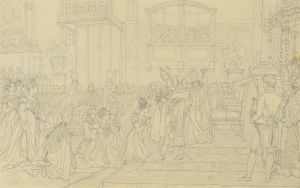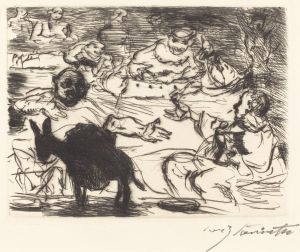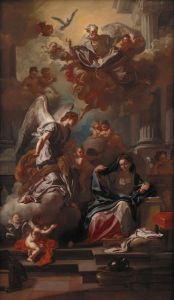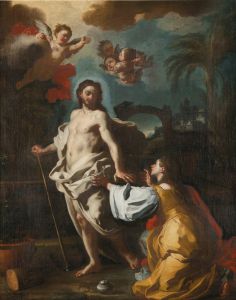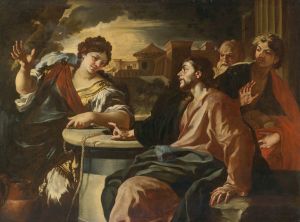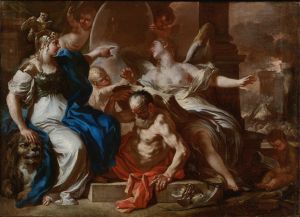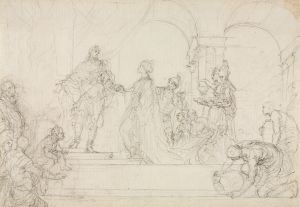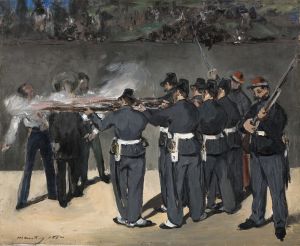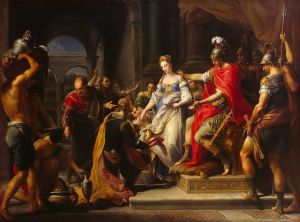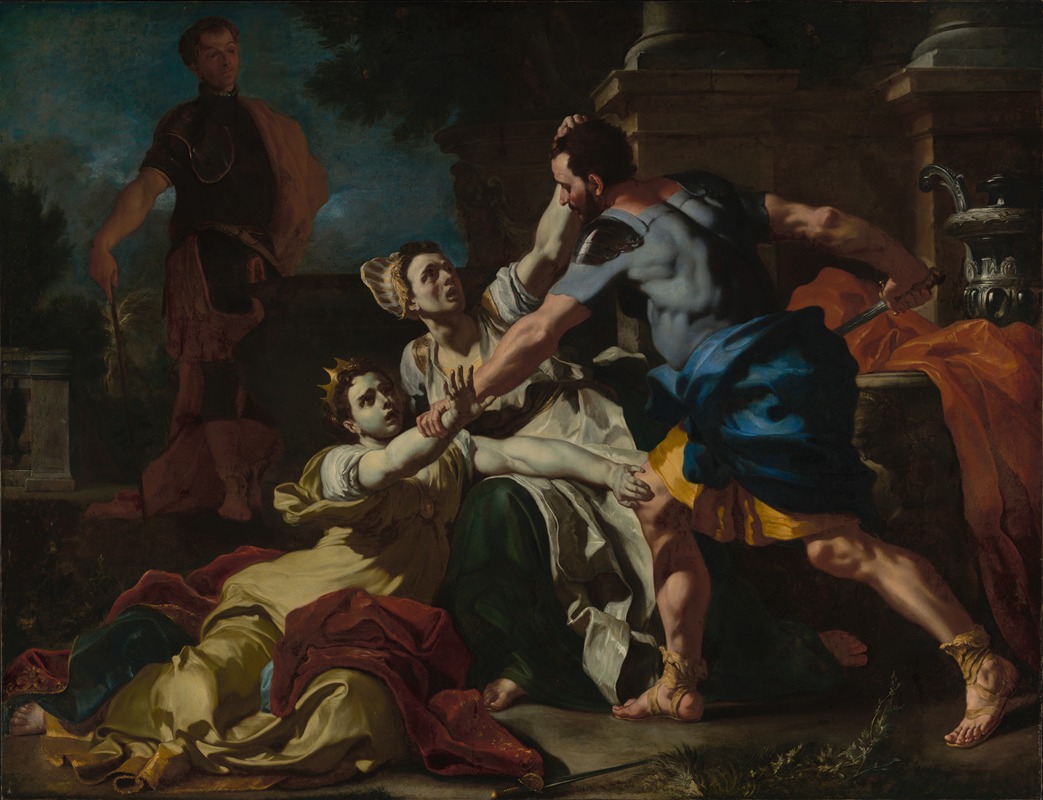
Death of Messalina
A hand-painted replica of Francesco Solimena’s masterpiece Death of Messalina, meticulously crafted by professional artists to capture the true essence of the original. Each piece is created with museum-quality canvas and rare mineral pigments, carefully painted by experienced artists with delicate brushstrokes and rich, layered colors to perfectly recreate the texture of the original artwork. Unlike machine-printed reproductions, this hand-painted version brings the painting to life, infused with the artist’s emotions and skill in every stroke. Whether for personal collection or home decoration, it instantly elevates the artistic atmosphere of any space.
"Death of Messalina" is a painting by the Italian Baroque artist Francesco Solimena, created around 1708. Solimena, born in 1657 and active until his death in 1747, was a prominent painter of the late Baroque period, known for his dynamic compositions and dramatic use of light and shadow.
The painting depicts the death of Valeria Messalina, the third wife of the Roman Emperor Claudius. Messalina is a historical figure known for her notorious reputation in ancient Roman history. She was executed in 48 AD after being accused of conspiring against her husband. The dramatic nature of her life and death has made her a subject of interest in various forms of art and literature.
In "Death of Messalina," Solimena captures the climactic moment of her demise. The composition is characterized by its dramatic intensity and the use of chiaroscuro, a technique that contrasts light and dark to create a sense of volume and depth. This technique was particularly popular among Baroque artists and is evident in the way Solimena highlights the central figures against a darker background.
The painting shows Messalina in a moment of despair, surrounded by figures that contribute to the narrative of her tragic end. The expressions and gestures of the characters are meticulously rendered, showcasing Solimena's skill in conveying emotion and movement. The use of rich, vibrant colors adds to the overall dramatic effect of the scene.
Solimena's work is often noted for its theatricality and the influence of other Baroque masters such as Pietro da Cortona and Luca Giordano. In "Death of Messalina," these influences are apparent in the dynamic composition and the emotional intensity of the figures. The painting reflects the Baroque fascination with dramatic historical and mythological subjects, rendered with a sense of grandeur and movement.
"Death of Messalina" is an example of Solimena's ability to combine historical narrative with the dramatic flair characteristic of the Baroque period. The painting not only captures a significant moment in Roman history but also exemplifies the artistic trends of the early 18th century in Italy. Solimena's attention to detail, his use of light and shadow, and his ability to convey complex emotions make this work a notable example of his oeuvre.
Today, Francesco Solimena is remembered as one of the leading painters of the Neapolitan Baroque. His works, including "Death of Messalina," continue to be studied and admired for their artistic merit and historical significance. The painting remains an important piece for understanding the development of Baroque art in Italy and the ways in which artists of the period engaged with historical themes.





